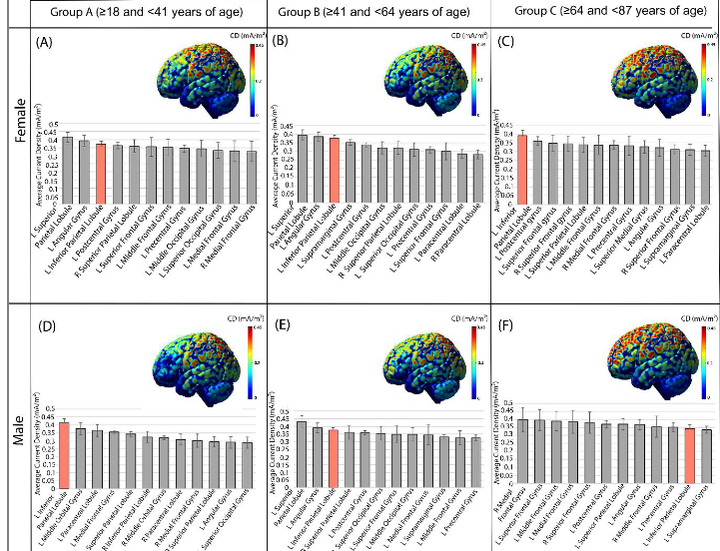Sex difference in tDCS current mediated by changes in cortical anatomy: A study across young, middle and older adults

Abstract
Introduction: The observed variability in the effects of transcranial direct current stimulation (tDCS) is influenced by the amount of current reaching the targeted region-of-interest (ROI). Age and sex might affect current density at target ROI due to their impact on cortical anatomy. The present tDCS simulation study investigates the effects of cortical anatomical parameters (volumes, dimension, and torque) on simulated tDCS current density in healthy young, middle-aged, and older males and females. Methodology: Individualized head models from 240 subjects (120 males, 18-87 years of age) were used to identify the estimated current density (2mA current intensity, 25cm2 electrode) from two simulated tDCS montages (CP5_CZ and F3_FP2) targeting the inferior parietal lobule (IPL) and middle frontal gyrus (MFG), respectively. Cortical parameters including segmented brain volumes (cerebrospinal fluid [CSF], grey and white matter), cerebral-dimensions (length/ width &length/height) and brain-torque (front and back shift, petalia, and bending) were measured using the magnetic resonance images (MRIs) from each subject. The present study estimated sex differences in current density at these target ROIs mediated by these cortical parameters within each age group. Results: For both tDCS montages, females in the older age group received higher current density than their male counterparts at the target ROIs. No sex differences were observed in the middle-aged group. Males in the younger age group had a higher current density than females, only for the parietal montage. Across all age groups, CSF, and grey matter volumes significantly predicted the current intensity estimated at the target sites. In the older age group only, brain-torque was a significant mediator of the sex difference. Conclusions: Our findings demonstrate the presence of sex differences in the simulated tDCS current density, however this pattern differed across age groups and stimulation locations. Future studies should consider influence of age and sex on individual cortical anatomy and tailor tDCS stimulation parameters accordingly.